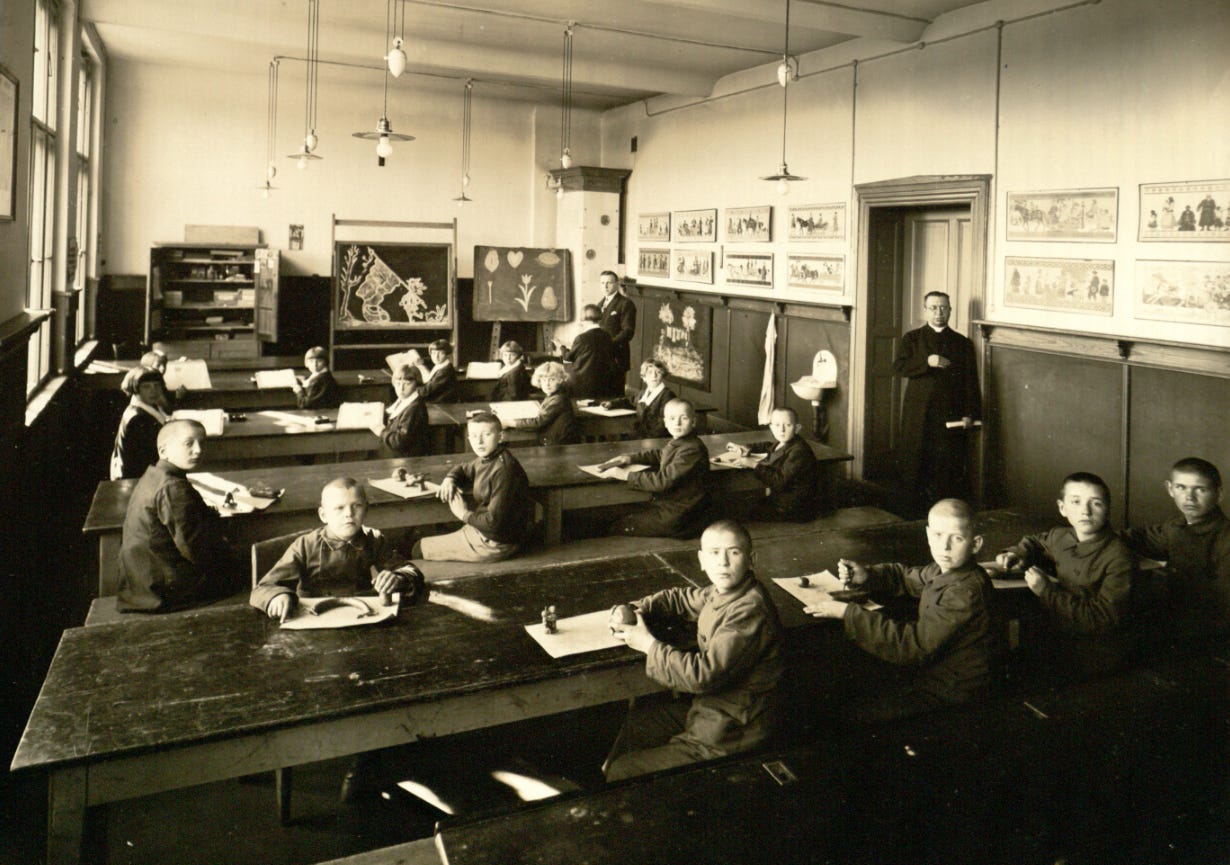On Global Education System
The Evolution of the Global Education System
The formalization of education has historically been shaped by socio-political, economic, and cultural forces. The transition from informal learning in ancient civilizations to state-controlled mass education systems reflects broader historical transformations.

Education has existed in various forms since the earliest civilizations. Formal schooling first emerged in Mesopotamia and Egypt, primarily for the training of scribes and administrative elites 1. In Ancient Greece, two contrasting models were prominent: Athenian education, which emphasized broad intellectual and civic training, and Spartan education, which was highly militaristic 2.
Medieval education in Europe was largely controlled by the Catholic Church, with monastic and cathedral schools being the primary centers of learning. Universities such as Bologna (1088) and Paris (1160) institutionalized higher education, maintaining a strong theological foundation 1.
From the 18th century onward, education became a tool for nation-building. In Prussia, mass compulsory schooling was introduced around 1800 to instill discipline and civic obedience 1. Similarly, Japan’s Meiji Restoration (1868) rapidly modernized education, adopting a Western-style system. Lenin’s Soviet Union (1919) used education as a means to promote socialist ideology and eradicate illiteracy 1.
The Industrial Revolution intensified the need for mass literacy and technical skills, leading to the standardization of curricula and the emergence of centralized education systems across the Western world 2.
Epistemological Frameworks and Dominant Educational Theories
Educational thought has been shaped by shifting epistemological paradigms, from religious orthodoxy to scientific empiricism, and later, constructivist approaches.
Pre-modern education was dominated by scholasticism, which attempted to reconcile faith and reason. This persisted until the Enlightenment (17th–18th century), which introduced empiricism and rationalism as dominant epistemological frameworks 2.
John Locke’s tabula rasa (blank slate) theory suggested that knowledge is acquired through experience, influencing early educational reforms. Rousseau’s Émile (1762) further emphasized the role of natural development and experiential learning 2.
In the 19th and early 20th centuries, education was largely influenced by behaviorism, particularly the work of Thorndike and Skinner, which emphasized stimulus-response learning 3. However, John Dewey and Lev Vygotsky challenged this model by advocating constructivist approaches, where learning is an active and socially mediated process 4.
Dewey’s Pragmatism: Education should be experiential and democratic, preparing individuals for participation in society.
Vygotsky’s Sociocultural Theory: Learning is a social process, occurring through interaction with more knowledgeable others, within the Zone of Proximal Development (ZPD) 3.
These perspectives became the foundation of progressive education and later social constructivism 3.
Several critiques of traditional education emerged before the AI era, questioning standardization, exclusion, and epistemological rigidity.
Freire (1921) criticized traditional education as a mechanism of social control, where knowledge is "deposited" into passive students. He advocated for dialogical education, where learners critically engage with knowledge to transform their realities 5.
Industrial-era education was designed for efficiency rather than individualized learning, leading to critiques that it stifles creativity and cultural inclusivity 4. Schunk (2012) further noted that traditional instruction overlooks the situated and constructivist nature of learning 3.
Education systems historically excluded women, lower classes, and colonized populations. Even when access improved, curricular content often reinforced dominant cultural narratives, limiting inclusivity 2.
Constructivist critiques highlighted the role of education in maintaining social hierarchies, emphasizing the need for culturally responsive pedagogy 3.
The historical trajectory of education provides a critical lens for examining the impact of AI on learning. The two dominant approaches—adapting AI to education vs. reimagining education with AI—must be analyzed in light of past epistemological shifts and ongoing critiques of educational systems.
Micro-Level Adaptation: AI tools such as personalized learning platforms are integrated into existing educational structures while preserving traditional curricula.
Macro-Level Re-imagination: AI is used to challenge existing epistemological assumptions, fostering new models of knowledge construction.
References
1. History of education. Wikipedia (2025).
2. Willilam Boyd. The History Of Western Education. (1947).
3. Schunk, D. H. Learning Theories: An Educational Perspective. xi, 402 (Macmillan Publishing Co, Inc, New York, NY, England, 2012).
4. Popkewitz, T. S. Dewey, Vygotsky, and the Social Administration of the Individual: Constructivist Pedagogy as Systems of Ideas in Historical Spaces. Am. Educ. Res. J. 35, 535–570 (1998).
5. Freire, P. & Macedo, D. Pedagogy of the Oppressed, 30th Anniversary Edition. (Continuum, New York, 2000).

